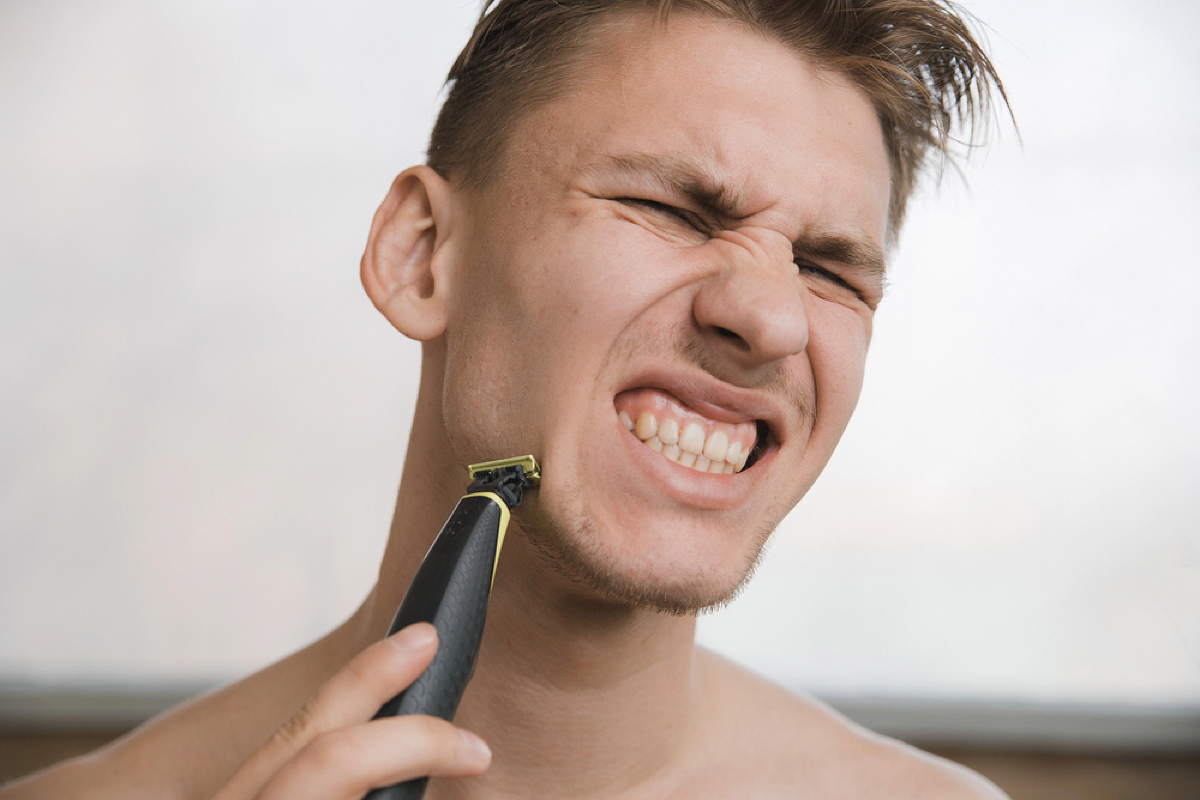What helps against razor bumps?
You probably know the problem: after shaving, you are happy to have smooth skin, but a short time later red, inflamed pimples appear. These unsightly and sometimes painful razor bumps are a widespread problem that affects both men and women.
Razor bumps are often caused by ingrown hairs that grow back into the skin and cause irritation. People with frizzy or thick hair are particularly susceptible to them. In this article, you’ll find out why razor bumps occur and what you can do about them.
We give you practical tips on preventing and treating razor bumps as well as instructions on the right shaving technique and skin care to keep your skin healthy and beautiful after shaving.
Understanding razor bumps: Causes and appearance
If you shave, you may be familiar with the problem: small pimples on your skin. Razor bumps are a common nuisance that can be caused by various factors.
What are razor bumps and how do they develop?
Razor bumps have two different causes. They are often small inflammations caused by bacteria that penetrate the damaged skin. Your body fights these bacteria with inflammation, which leads to small pimples. Alternatively, razor bumps can also be caused by ingrown hairs when the hair shaft is cut off and continues to grow under the skin.
Razor bumps vs. razor burn: the important differences
It is important not to confuse razor bumps with razor burn. While razor bumps are punctual inflammations, razor burn is an extensive injury to the skin where the top layer has been removed. This redness is the result of skin irritation after shaving. By understanding these differences, you can take more targeted action against razor bumps.
By knowing the causes, you can choose the right treatment methods and thus effectively combat razor bumps.
Common spots and causes of razor bumps
Razor bumps can appear anywhere on the body, but some areas are particularly susceptible. If you know where razor bumps are most common and what encourages their formation, you can take targeted preventative measures.
The 5 typical problem areas on the body
There are certain areas of the body that are particularly frequently affected by razor bumps. These include
- The face, especially the beard area in men
- The neck, a sensitive region with thin skin
- The armpits, an area with sensitive skin and curved hairs
- The bikini area, a sensitive region that is often irritated
- The legs, a frequently shaved part of the body
Each of these zones presents its own challenges, whether due to skin texture, hair structure or the shape of the area.
6 common factors that promote razor bumps
There are several factors that favor the development of razor bumps. These include
- Incorrect shaving techniques that irritate the skin and cause irritation
- Lack of shaving cream to protect the skin during shaving
- Sensitive skin that is particularly prone to irritation
- Ingrown hairs that can lead to inflammation and pimples
- Tight clothing and friction, which further irritate the skin
- Frequent shaving, which stresses the skin and increases the risk of razor bumps
By understanding these factors and adjusting accordingly, you can minimize the risk of razor bumps and achieve smoother skin.
What helps against razor bumps: 8 effective methods
If you suffer from razor bumps, there are several methods that can help you get rid of these unsightly skin irritations. Razor bumps can be very uncomfortable and are often the result of improper shaving or sensitive skin.
It’s important to know the right approach to effectively treat razor bumps and avoid them in the future. Here are some proven approaches that can help you.
Immediate measures for acute razor bumps
If you already suffer from razor bumps, there are some immediate measures you can take to alleviate the symptoms. A warm compress can help to soothe the skin and reduce inflammation.
In addition, products with aloe vera or zinc ointments can have an anti-inflammatory effect and promote healing. It is important that you avoid scratching or squeezing the pimples, as this can lead to further inflammation.
“The right care and treatment can help to clear up razor bumps quickly and soothe the skin.”
Some home remedies you can use are:
- Aloe vera creams
- Zinc ointments
- Honey
- St. John’s wort oil
Long-term solutions for recurring problems
For those who frequently suffer from razor bumps, there are long-term strategies that can break the vicious cycle. A regular skin care regimen, including exfoliation and moisturizing, can help keep skin healthy.
Another option is laser hair removal, which can help prevent razor bumps in the long term. It is also advisable to avoid tight clothing and apply topical treatments with active ingredients such as salicylic acid.
| Long-term method | Description | Advantage |
|---|---|---|
| Regular exfoliation | Removes dead skin cells | Prevents ingrown hairs |
| Moisturizing care | Keeps the skin moisturized | Reduces irritation |
| Laser hair removal | Reduces hair growth | Avoids razor bumps in the long term |
By following these tips and using the right products, you can effectively treat razor bumps and avoid them in the future.
The right shaving technique for prevention
With the right shaving technique, you can minimize the risk of razor bumps. An effective shave starts with preparing your skin properly and using a suitable shaving method.
Optimal preparation of the skin before shaving
Before you start shaving, it is important to prepare your skin properly. This includes cleansing your skin with warm water to remove dead skin cells and impurities. Warm water causes your skin to swell, allowing the razor blades to glide over your skin better and cut the hairs more gently.
- Cleanse your skin with warm water before shaving.
- Leave high-quality shaving products on for a few minutes to soften the hairs.
Step-by-step: The right shaving method
The right shaving method is crucial to avoid razor bumps. Carefully place the razor on the skin and gently guide the blades with the stroke, i.e. in the direction of hair growth. This minimizes the risk of skin irritation and razor bumps.
A gentle shave is not just a question of technique, but also of the tools you use.
Use sharp and clean razor blades, as blunt blades can pull out the hairs and cause skin injuries. Unsharp blades can also bring bacteria to sensitive skin.
The best tools and aids for a gentle shave
Choosing the right tools and aids is crucial for a gentle shave. This includes sharp razor blades, high-quality razors and special products for sensitive skin.
- Choose the right razor for your skin.
- Change the razor blades regularly to ensure optimum sharpness.
- Use special products for sensitive skin to minimize skin irritation.
By following these tips and using the right shaving technique, you can significantly reduce the risk of razor bumps and enjoy a comfortable shave.
Protect your skin from razor bumps in the long term
To protect your skin from razor bumps in the long term, a combination of the right shaving technique, careful skin care and suitable products is crucial.
By applying the tips and strategies presented in this article, you can minimize the risk of razor bumps. Remember to gently exfoliate your skin after shaving to prevent ingrown hairs.
If you continue to suffer from razor bumps despite all precautions, you should see a dermatologist for further advice and treatment.





